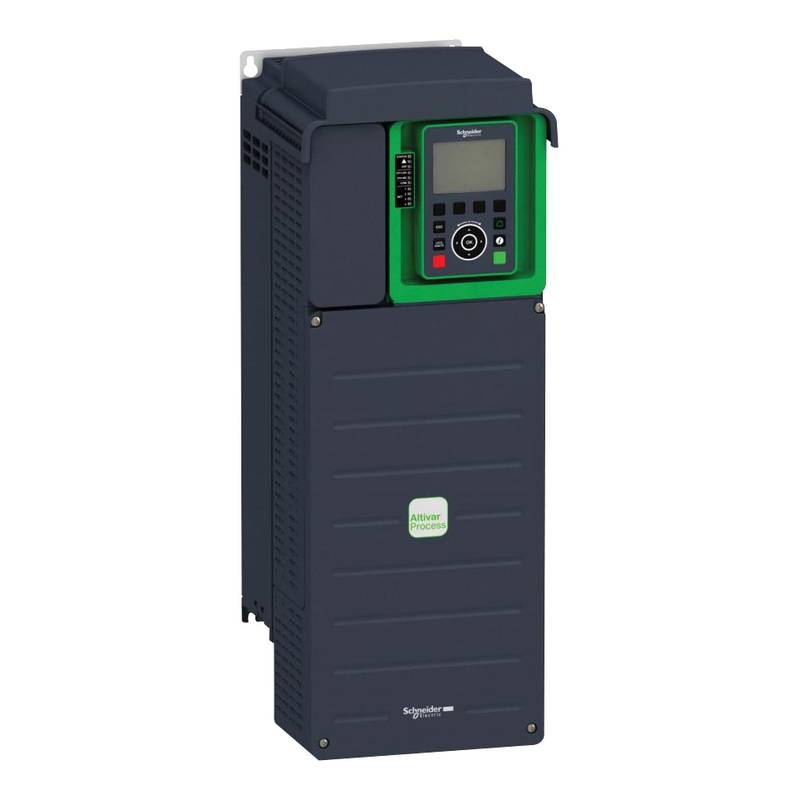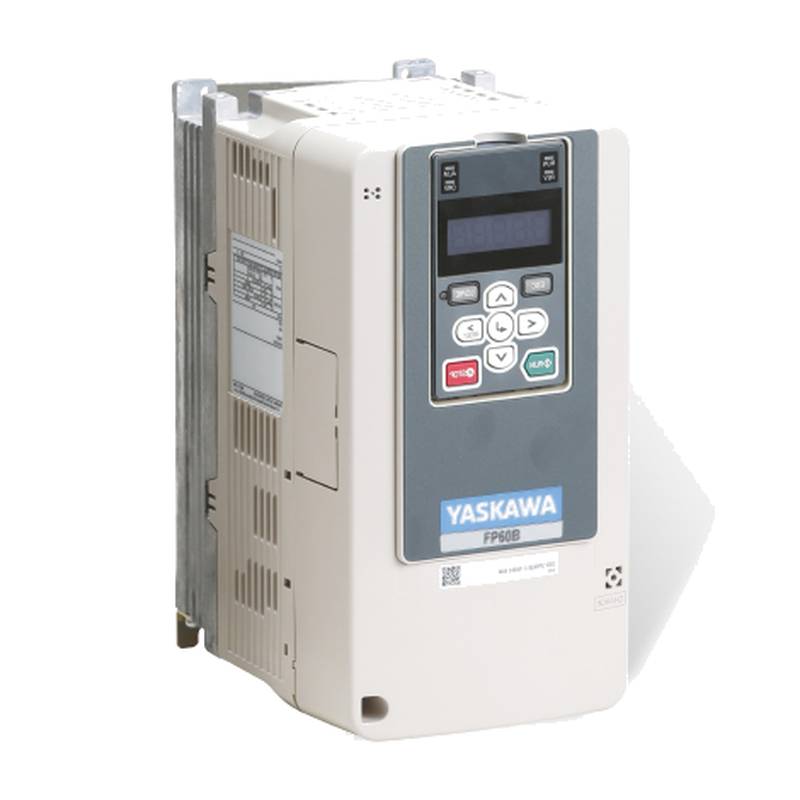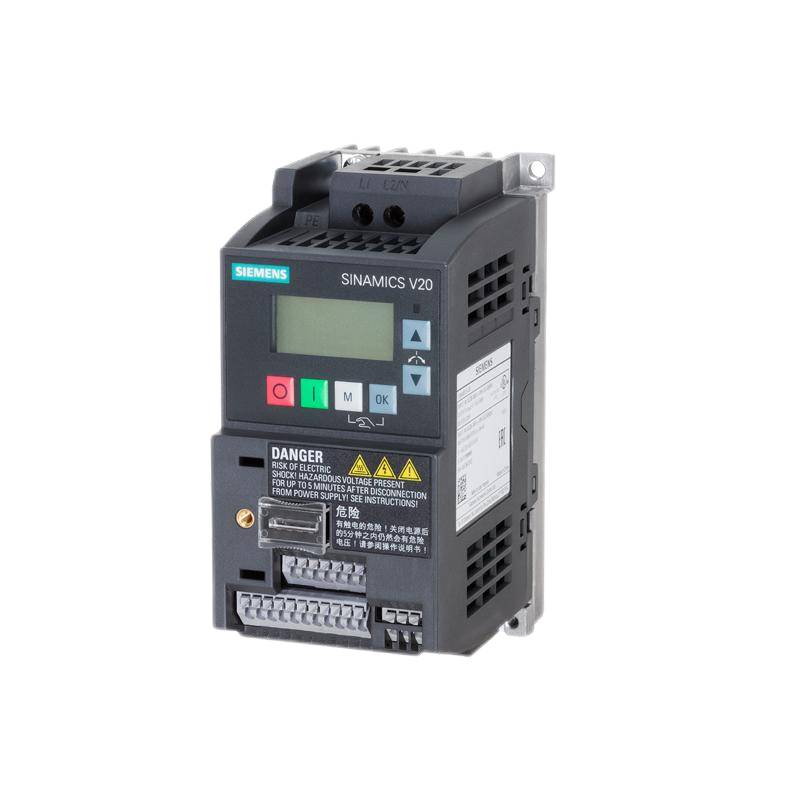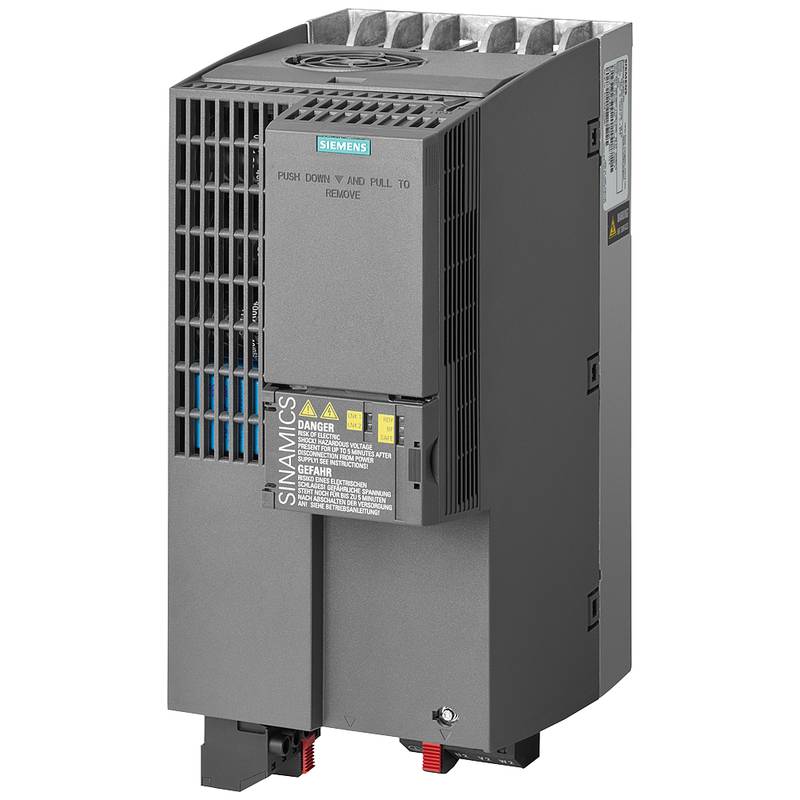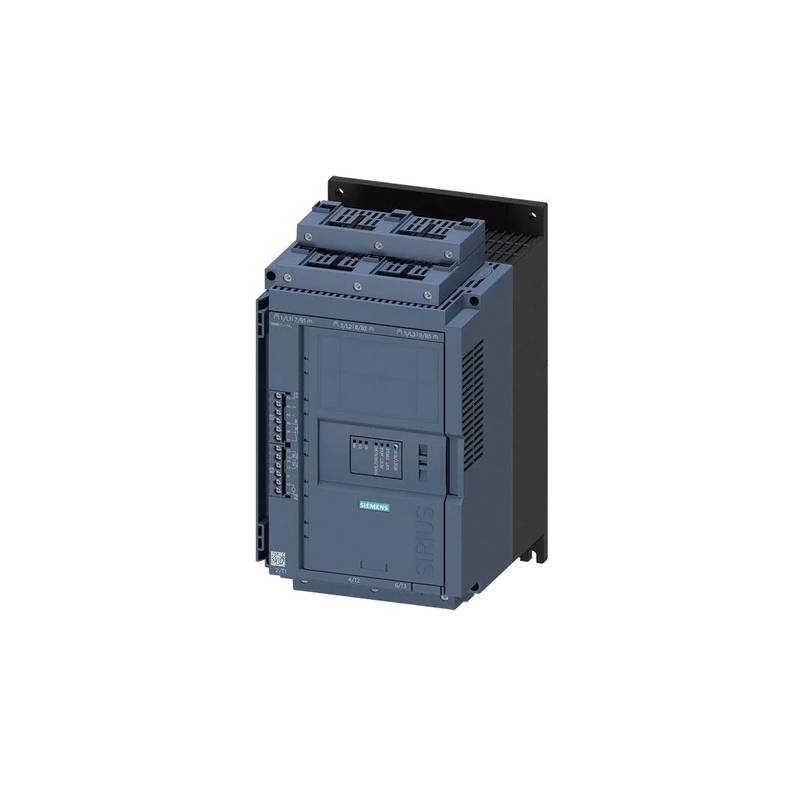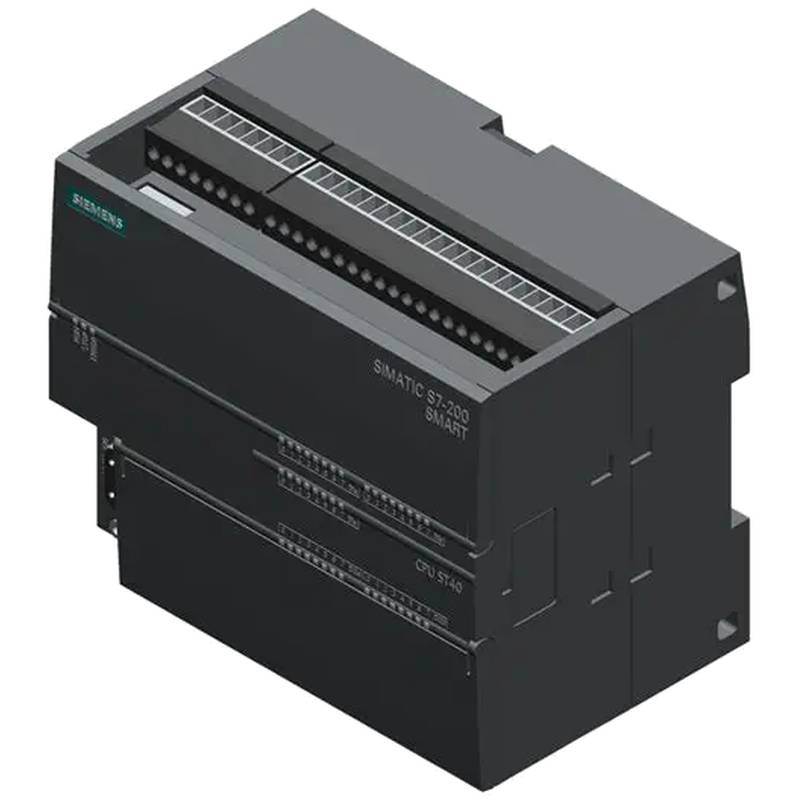
The Schneider ATV630D18N4 is a high-performance variable frequency drive (VFD) designed to optimize motor control in demanding industrial applications. This energy-saving frequency converter delivers exceptional efficiency with a rated current of 33.4A and a power output of 18.5kW, boasting an IP21 enclosure for reliable operation in various environments. Its advanced features focus on precise speed regulation, significant energy savings, and seamless integration into complex automation systems, making it a cornerstone for modern industrial processes seeking enhanced productivity and reduced operational costs.
Schneider ATV630D18N4: Product Specifications
| Parameter | Value |
| :--------------------- | :----------------------------------- |
| Product Name | Altivar Process ATV630 |
| Drive Type | Variable Speed Drive |
| Rated Power | 18.5 kW (25 HP) |
| Input Voltage | 380-400 V AC (3-phase) |
| Output Current | 33.4 A (at nominal voltage) |
| Enclosure Type | IP21 |
| Frequency Range | 0.1...400 Hz |
| Mounting Type | Wall-mounted |
| Communication Protocol | Modbus, EtherNet/IP, Profibus DP etc. |
| Control Type | Voltage/Frequency, Vector Control |
| Cooling Method | Forced convection |
| Ambient Temperature | -15 to 50 °C (derating above 40 °C) |
Core Features & Market Positioning
The Schneider ATV630D18N4 stands out in the competitive VFD market due to its robust design and advanced control algorithms, specifically tailored for process industries. Its core advantage lies in its superior energy efficiency, capable of reducing energy consumption by up to 60% in variable torque applications compared to fixed-speed motors. The drive incorporates advanced motor control technologies, including sensorless vector control, which provides precise speed and torque regulation even under fluctuating loads, eliminating the need for motor feedback in many scenarios. Furthermore, its intuitive HMI (Human Machine Interface) and comprehensive communication options, supporting protocols like Modbus TCP/IP, EtherNet/IP, and Profibus DP, ensure effortless integration into existing SCADA and DCS systems, positioning it as a highly adaptable and future-proof solution for process automation.
Key Application Scenarios
This robust frequency converter is engineered for a wide array of demanding industrial applications. It excels in pump and fan control within water treatment plants and HVAC systems, where precise flow and pressure management lead to substantial energy savings. The ATV630D18N4 is also a prime choice for conveyors and material handling systems in manufacturing and logistics, ensuring smooth acceleration and deceleration for sensitive goods. Its ability to deliver high starting torque and maintain stable operation under varying loads makes it suitable for mixers, extruders, and other process machinery in the chemical, food and beverage, and oil and gas sectors. The IP21 enclosure provides adequate protection for installations in non-hazardous environments, commonly found in many industrial settings.
Practical System Integration Guidance
Integrating the Schneider ATV630D18N4 into existing systems is streamlined through its versatile connectivity and straightforward setup procedures. For wiring, ensure the input power terminals are correctly connected to the 3-phase 380-400V AC supply, observing proper grounding for safety. The motor power output terminals should be securely connected to the motor windings, adhering to the drive's current rating. Commissioning typically involves configuring basic motor parameters such as rated power, voltage, frequency, and current, accessible via the drive's local keypad or through connected software tools like SoMove. For advanced applications, implementing sensorless vector control requires careful tuning of motor characteristics to achieve optimal performance and transient response. Communication setup involves selecting the appropriate protocol (e.g., Modbus RTU via terminal connections or Ethernet modules) and configuring network addresses and baud rates according to the supervisory control system's requirements.
Operation and Risk Mitigation
Safe operation of the Schneider ATV630D18N4 hinges on adherence to electrical safety standards and proper installation practices. Always ensure the drive is de-energized before performing any wiring or maintenance. The IP21 enclosure offers protection against solid objects greater than 12.5mm and vertically falling water droplets, but it is not suitable for environments with excessive moisture, dust, or corrosive substances. Common operational issues may include motor overload or underload faults, often stemming from incorrect motor parameter settings or application mismatches. Over-temperature faults typically indicate inadequate ventilation or operation beyond the drive's rated ambient temperature. Critical error codes, such as "Under Voltage" or "Over Current," should be addressed by verifying the input power quality and motor load conditions. Always consult the official Schneider Electric documentation for a complete list of fault codes and their remediation procedures.
Scalability & Long-Term Value
The Schneider ATV630D18N4 is designed for scalability, allowing for integration into increasingly complex industrial automation architectures and supporting the evolution towards Industry 4.0. Its modular design and extensive range of communication options facilitate seamless integration with Programmable Logic Controllers (PLCs) and Distributed Control Systems (DCS). For enhanced control and monitoring, the ATV630 series can be integrated with Schneider Electric's EcoStruxure™ platform, enabling remote diagnostics, predictive maintenance, and energy management insights. This connectivity supports the transition to Industrial Internet of Things (IIoT) environments, allowing for data-driven optimization of processes and improved operational efficiency over the long term. Compatibility with a wide range of motor types and the availability of optional communication cards ensure that the ATV630D18N4 can adapt to evolving system requirements and technology upgrades without necessitating a complete drive replacement.
Frequently Asked Questions
What are the primary benefits of using the Schneider ATV630D18N4?
The ATV630D18N4 offers significant energy savings by adjusting motor speed to match demand. It provides precise motor control for improved process efficiency and product quality. The drive also enhances system reliability and reduces mechanical stress on equipment.
This VFD minimizes energy waste in applications like pumps and fans. Its advanced control ensures consistent operational performance. The drive's robust construction contributes to a longer equipment lifespan.
Furthermore, it allows for smoother starts and stops, reducing wear on motor components. This leads to lower maintenance costs and increased uptime.
How does the IP21 rating affect the installation of the ATV630D18N4?
An IP21 rating signifies protection against solid objects larger than 12.5mm and vertically falling water. This means the drive can be installed in locations where direct contact with small objects is unlikely. It is protected against dripping water, making it suitable for indoor environments with moderate humidity.
The drive should not be installed where it will be exposed to direct spraying of water or in excessively dusty conditions. Avoid areas with high condensation or where water might collect. Proper ventilation is still crucial, as the IP rating does not imply water ingress protection from high-pressure jets.
For optimal performance and longevity, install the ATV630D18N4 in a clean, dry, and well-ventilated industrial control panel or enclosure. Ensure that any openings in the enclosure are not compromised.
What motor types are compatible with the Schneider ATV630D18N4?
The ATV630D18N4 is designed to control standard asynchronous (induction) motors. It supports both 2-wire and 4-wire motor configurations. The drive is suitable for a wide range of power ratings within its specified 18.5kW limit.
It offers various control modes, including Volts/Hertz and sensorless vector control, which optimize performance for different motor characteristics. Sensorless vector control provides excellent torque accuracy and dynamic response without the need for a motor encoder.
Always refer to the product manual for specific motor parameter configuration. Correctly setting these parameters, such as motor nominal power, voltage, frequency, and current, is essential for optimal performance and drive protection.
Can the ATV630D18N4 be integrated with Modbus communication?
Yes, the Schneider ATV630D18N4 fully supports Modbus communication protocols. It can be configured for Modbus RTU via terminal connections or Modbus TCP/IP if an Ethernet communication module is installed. This allows for seamless integration into supervisory control systems.
Using Modbus enables the drive to exchange data with PLCs, HMIs, and SCADA systems. This includes reading drive status, parameters, and fault codes, as well as writing control commands and setting parameters remotely.
Proper configuration of the Modbus address, baud rate, and parity settings on both the drive and the master device is crucial for successful communication. Refer to the communication manual for detailed setup instructions.
What is the typical power factor correction for the ATV630D18N4?
Variable frequency drives like the ATV630D18N4 generally present a near-unity power factor at full load. This is due to the DC bus capacitor and the switching nature of the inverter. However, at light loads, the power factor can decrease.
The drive itself does not typically require external power factor correction capacitors on the input side unless specific grid regulations or system limitations mandate it. Schneider Electric designs these drives with consideration for harmonic distortion and power factor.
For applications requiring very precise power factor control or where the grid connection is sensitive, consult Schneider Electric's application engineers. They can advise on the best approach, which might involve harmonic filters or other mitigation strategies if necessary.
How do I perform a basic motor auto-tuning on the ATV630D18N4?
Basic motor auto-tuning, also known as motor identification, is a critical step for optimal performance, especially with sensorless vector control. Access the drive's menu and navigate to the motor parameter section. Initiate the auto-tuning process, ensuring the motor is disconnected from any load if possible.
The drive will then perform a series of tests by applying different voltages and frequencies to the motor windings. It measures the motor's electrical characteristics, such as resistance and inductance, to establish a precise motor model. This process typically takes a few minutes.
Once complete, the drive stores the identified motor parameters, which are crucial for accurate speed and torque control. It's recommended to perform auto-tuning whenever a new motor is connected or if motor parameters are changed.
What are the key advantages of sensorless vector control on this drive?
Sensorless vector control offers precise speed and torque regulation without the need for an expensive motor encoder. This simplifies installation and reduces potential points of failure. The drive can maintain accurate torque even at very low speeds.
It provides excellent dynamic response, allowing the motor speed to adjust quickly to changes in load or command signals. This is vital for applications requiring precise process control, such as those involving conveyors or extruders.
This advanced control method enhances energy efficiency by precisely matching motor output to the required load. It also minimizes mechanical stress on the motor and driven equipment by providing smoother operation.
What is the environmental operating range for the ATV630D18N4?
The Schneider ATV630D18N4 is designed to operate in ambient temperatures ranging from -15°C to 50°C. However, it's important to note that derating of the drive's current output capacity is required above 40°C. For example, at 50°C, the drive might operate at a reduced current capacity.
Proper ventilation is crucial, especially when operating at higher ambient temperatures or at the drive's full load capacity. Ensure adequate airflow around the drive to prevent overheating. The IP21 rating indicates protection against dripping water but not against condensation or high humidity.
Always refer to the product's datasheet for precise derating curves and installation guidelines related to temperature and altitude. Operating outside these specified conditions can lead to reduced performance or premature failure.
How can I troubleshoot common faults like "Over Current" on the ATV630D18N4?
An "Over Current" fault typically indicates that the motor is drawing more current than the drive is programmed to allow or is capable of supplying. This can be caused by a direct short circuit in the motor or cabling, or by a sudden, excessive mechanical load on the driven equipment. It might also occur during a rapid acceleration ramp if the ramp time is set too short.
To troubleshoot, first, inspect the motor and all motor power cabling for any signs of damage or loose connections. If possible, disconnect the motor and run the drive with no load to see if the fault persists. If the fault disappears, the issue likely lies with the motor or the driven load.
Check the drive's configured current limits and acceleration ramp times. Ensure they are appropriate for the motor and application. If the fault continues, a more in-depth motor test or inspection of the driven machinery may be necessary.
What are the safety considerations when installing and operating this VFD?
Always ensure the main power supply to the VFD is completely disconnected and locked out before performing any electrical work, including wiring or maintenance. Verify that the drive is properly grounded according to local electrical codes and standards.
The output of a VFD can still carry dangerous voltage even when the motor is not running. Never touch terminals or internal components immediately after power has been removed, as capacitors can retain a charge. Use appropriate personal protective equipment (PPE).
Be aware of the drive's operating temperature and ensure adequate ventilation to prevent overheating, which can lead to equipment failure or fire hazards. Familiarize yourself with the drive's fault codes and emergency stop procedures.














